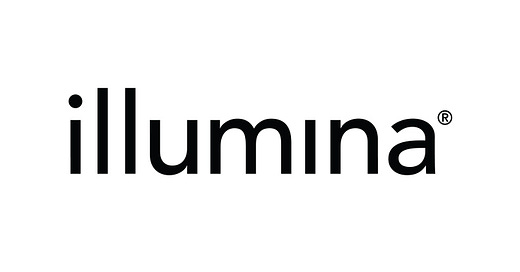Subscribe to AGB - One analysis of a good business every two weeks.
Illumina
Disclaimer: As a generalist, we ran into some challenges analyzing Illumina but it was rewarding nonetheless. We try to keep most of the science to a basic level of understanding. Looking past all the technical stuff is a highly defensible business model with an increasing mix towards recurring revenues. The genomic sequencing market is still in its early stages of adoption and Illumina, as the leader in providing the “picks and shovels” for the industry, is well positioned to benefit from its growth.
When genomic sequencing is mentioned, many people think of direct-to-consumer (DTC) companies like 23andMe and Ancestry.com. These companies are well known from their marketing campaigns and because of the novelty factor of genetic testing but they don’t actually use genomic sequencing technology to run their tests. Instead, these companies do genotyping, which compares small sections of a person’s genome to refere…



